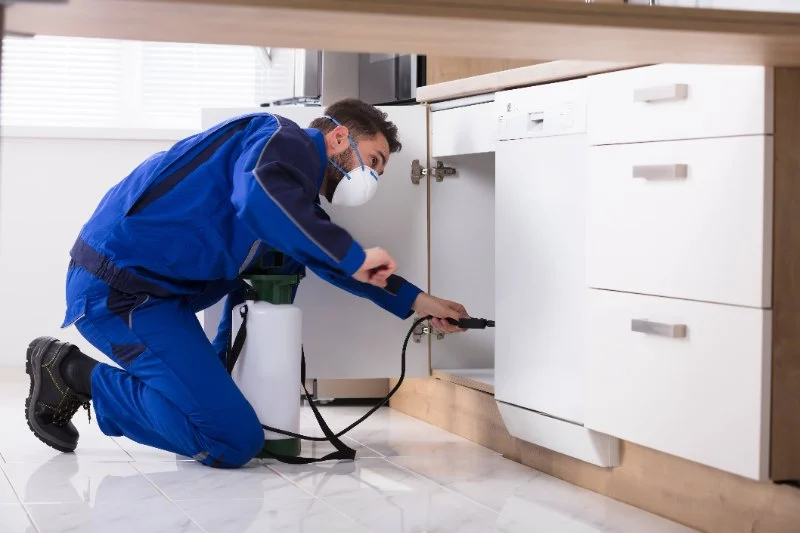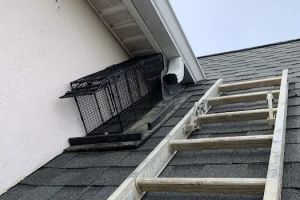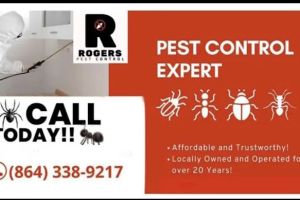
1. Why Safe Pest Control Around Food Storage Areas is Essential
Food storage areas are vital for maintaining the safety and quality of your food. However, they can also attract pests, which can contaminate your food, compromise your health, and cause damage to your stored goods. That's why implementing safe and effective pest control is crucial in these areas.
In this guide, we’ll explore the best practices for pest control around food storage areas, ensuring that you maintain a pest-free environment without compromising food safety.
2. Understanding the Risks of Pests in Food Storage Areas
Pests in food storage areas can introduce a variety of risks, including:
- Contamination: Pests like rodents and insects can carry diseases and bacteria that may contaminate your food supplies.
- Damage to Food Packaging: Rodents can chew through packaging, while insects can infest grains, cereals, and dried foods.
- Health Risks: Certain pests, such as cockroaches and mice, can introduce allergens and pathogens that pose health risks to humans.
3. Safe Pest Control Methods for Food Storage Areas
When it comes to pest control in food storage areas, safety should always come first. Below are some of the most effective and safe pest control methods:
3.1. Preventive Measures
Preventing pests from entering food storage areas is one of the most effective ways to avoid infestations. Here are some preventive measures to consider:
- Seal Entry Points: Inspect the storage area for cracks, gaps, or holes where pests can enter. Seal these openings with caulk or weather stripping to block potential entry points.
- Properly Store Food: Store food in airtight containers to prevent pests from accessing the contents. This includes grains, nuts, and dried foods that are particularly attractive to pests.
- Maintain Cleanliness: Regularly clean your storage areas to remove crumbs, spills, and food debris that can attract pests.
3.2. Natural Pest Control Options
If you're concerned about using chemicals near food, there are several natural pest control methods that can be highly effective:
- Essential Oils: Certain essential oils, like peppermint and eucalyptus, can repel pests like ants, spiders, and rodents. Simply place cotton balls soaked in essential oils around your food storage area.
- Diatomaceous Earth: This natural substance can be sprinkled in cracks and crevices to help control crawling insects like ants and cockroaches. It is non-toxic to humans and pets.
- Herbs and Spices: Some herbs, like bay leaves and cloves, can naturally repel insects and rodents. Consider placing these in your food storage containers for added protection.
3.3. Using Traps and Baits
In some cases, traps and baits can be a necessary part of pest control. When using these methods, be sure to select options that are safe around food:
- Snap Traps: These traps can be used for rodents and are one of the safest options. Place them away from food items, but in areas where pests are likely to travel.
- Glue Traps: Glue traps are effective for catching insects like cockroaches and ants. However, they should be used in areas where food is not directly accessible.
3.4. Professional Pest Control Services
If you're dealing with a larger pest infestation that requires expert intervention, professional pest control services can offer safe and effective solutions. They will use non-toxic methods and products approved for use around food storage areas, ensuring your food remains safe while pests are eradicated.
4. Tips for Maintaining a Pest-Free Food Storage Area
In addition to the methods listed above, here are a few tips to help keep your food storage area pest-free:
- Regular Inspections: Conduct regular inspections of your food storage area to catch any signs of pests early, such as droppings, webs, or chewed packaging.
- Proper Ventilation: Ensure that your food storage area is well-ventilated. This reduces humidity levels, which can attract pests like mold and mildew.
- Use Pest Control Products Wisely: Always read and follow the instructions for any pest control products you use, and avoid placing them near food items.
5. Case Study: Successful Pest Control in a Commercial Food Storage Facility
One of our clients, a local bakery, struggled with an ongoing rodent problem in their food storage areas. After implementing the steps we recommended—sealing entry points, using natural repellents like peppermint oil, and setting snap traps—they were able to keep their storage areas pest-free without compromising the safety of their food. The bakery has since maintained a pest-free environment and continues to use preventive measures as part of their regular maintenance routine.
6. Conclusion
Maintaining a pest-free environment around food storage areas is crucial for both safety and hygiene. By implementing the proper preventive measures, using safe and natural pest control methods, and regularly monitoring your storage area, you can effectively protect your food from pests without compromising safety. For additional pest control products and services, visit PestControlHub for expert advice and top-quality solutions tailored to your needs.









 Wildlife Resolutions4.0 (443 reviews)
Wildlife Resolutions4.0 (443 reviews) Pest Marshals of Toledo5.0 (2 reviews)
Pest Marshals of Toledo5.0 (2 reviews) LS Rodent Proofing & Pest Control Service5.0 (4 reviews)
LS Rodent Proofing & Pest Control Service5.0 (4 reviews) Best Termite & Pest Control4.0 (16 reviews)
Best Termite & Pest Control4.0 (16 reviews) Varment Guard Wildlife Services5.0 (28 reviews)
Varment Guard Wildlife Services5.0 (28 reviews) Pestban Inc4.0 (394 reviews)
Pestban Inc4.0 (394 reviews) How to Use Monitors to Detect Pest Entry: A Comprehensive Guide
How to Use Monitors to Detect Pest Entry: A Comprehensive Guide How to Predict Which Pests Will Invade Next – Smart Pest Forecasting for the U.S.
How to Predict Which Pests Will Invade Next – Smart Pest Forecasting for the U.S. How to Conduct a Pest Risk Assessment at Home – Expert Guide
How to Conduct a Pest Risk Assessment at Home – Expert Guide How to Block Pest Entry Around Deck Joists: Effective Solutions
How to Block Pest Entry Around Deck Joists: Effective Solutions How to Safely Use Fumigation Methods: A Comprehensive Guide for Homeowners
How to Safely Use Fumigation Methods: A Comprehensive Guide for Homeowners Why Pests Are More Active After Rain: Understanding the Link Between Weather and Pest Behavior
Why Pests Are More Active After Rain: Understanding the Link Between Weather and Pest Behavior